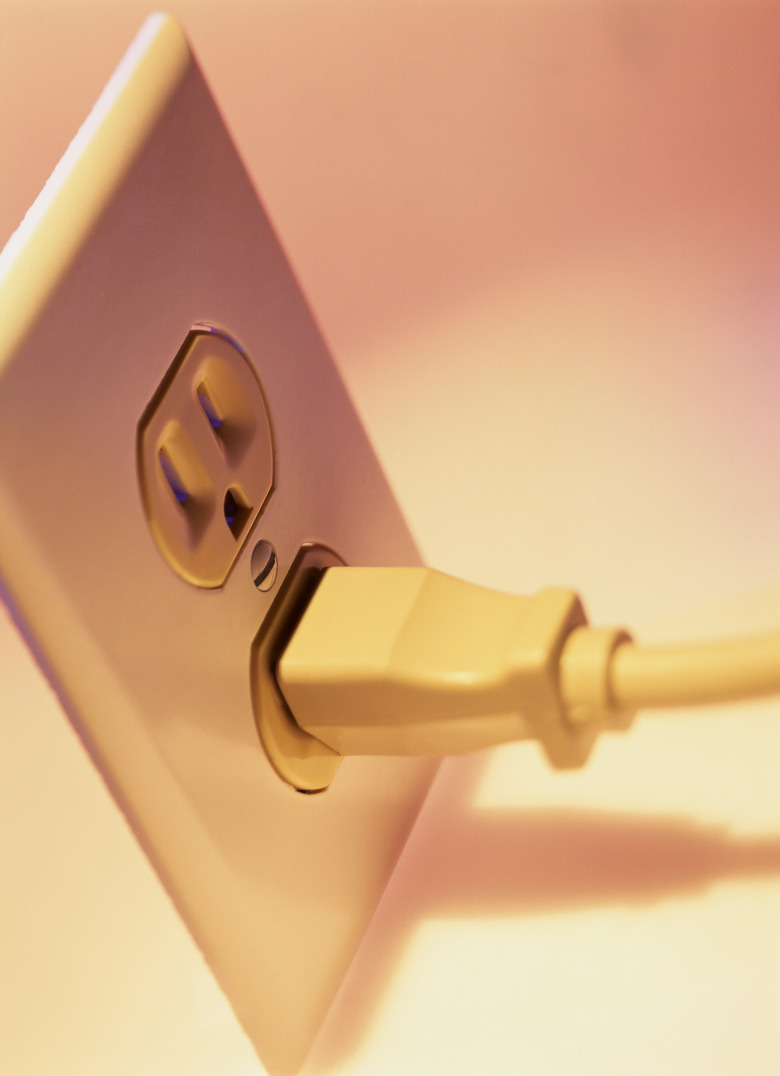Types Of Electric Current
Electric current comes in two varieties: alternating current and direct current, abbreviated as AC and DC. Both types have their own specific uses in terms of power generation and use, although AC is the more common type of electrical current in the home. The difference is that direct current only flows in one direction, while alternating current switches directions rapidly.
Electricity Is the Flow of Electrons
Electricity Is the Flow of Electrons
Electricity is a result of the movement of electrons. In all substances, the negatively charged electrons in atoms move around randomly. When the electrons begin to flow in a particular direction within a substance, or from one object to another, the result is electricity. The movement of electrons can be harnessed for energy. Electron movements occur when two objects are rubbed together and electrons are transferred from one to another, which is static electricity. When electrons flow in a current, such as through through a conductor like copper wire, the electricity is called electric current.
How Does Current Actually Flow?
How Does Current Actually Flow?
Electric current is the flow of electrons, but electrons do not jump directly from the origin point of the current to the destination. Instead, each electron moves a short distance to the next atom, transferring its energy to an electron in that new atom, which jumps to another atom, and so on.The individual electrons do not move quickly, but the current itself moves at the speed of light. Current flow heats up the conductor. This mechanic produces light in lightbulbs and heat in electric stovetops.
Direct Current and Alternating Current
Direct Current and Alternating Current
Direct current is electric current that only flows in one direction. A common place to find direct current is in batteries. A battery is first charged using direct current that is then transformed into chemical energy. When the battery is in use, it turns the chemical energy back into electricity in the form of direct current. Batteries need direct current to charge up, and will only produce direct current.
You need an inductive generator to produce alternating current. English physicist Michael Faraday discovered electromagnetic induction, and Nikola Tesla, in conjunction with the Westinghouse Company, developed the large induction generators that power civilization today. Because an induction generator has a spinning rotor, the electricity it produces changes direction once and back again with each cycle of the rotor. In the United States, the period of this cycle has been standardized to be 60 Hertz.
Alternating Current Wins the Day
Alternating Current Wins the Day
When electricity is produced in large scale, such as in a power plant, it has a dangerously high voltage which must be stepped down at the user end. It's easier to do this with AC current than DC current. However, that isn't the main reason that AC is the current of choice for domestic consumption. In the late 19th century, a struggle between industrial producers Westinghouse and General Electric, which promoted DC electricity ended in Westinghouse's favor when it successfully powered the 1893 Chicago World's Fair using AC current. Since then, alternating current powers homes and anything else that draws on the current in power lines.
Cite This Article
MLA
Gellert, Andrew. "Types Of Electric Current" sciencing.com, https://www.sciencing.com/types-electric-current-5996/. 10 April 2018.
APA
Gellert, Andrew. (2018, April 10). Types Of Electric Current. sciencing.com. Retrieved from https://www.sciencing.com/types-electric-current-5996/
Chicago
Gellert, Andrew. Types Of Electric Current last modified March 24, 2022. https://www.sciencing.com/types-electric-current-5996/
